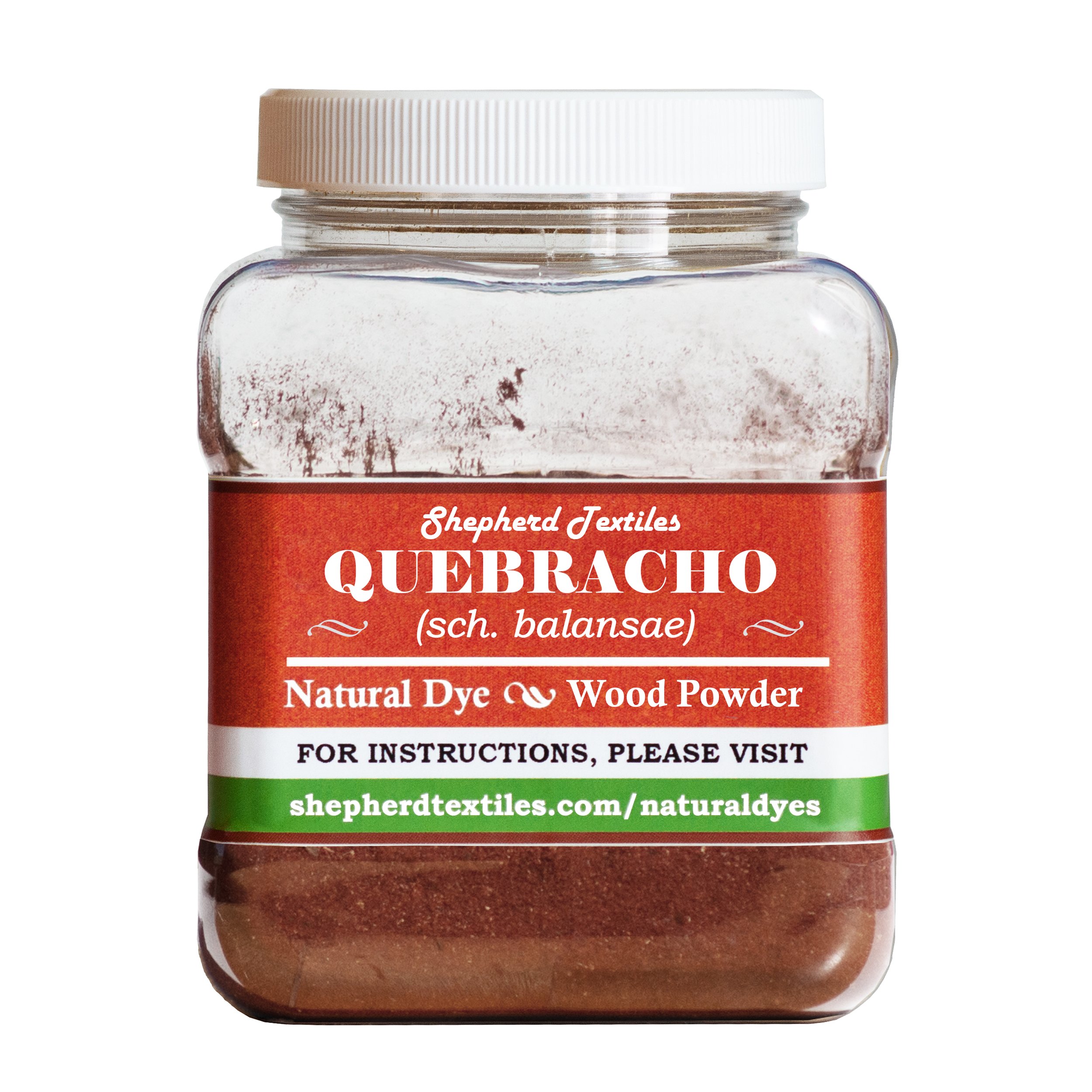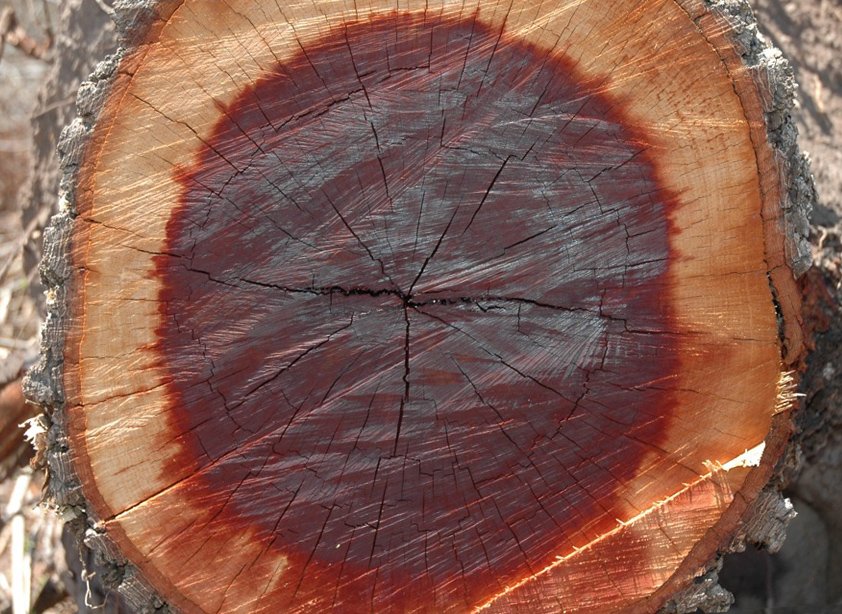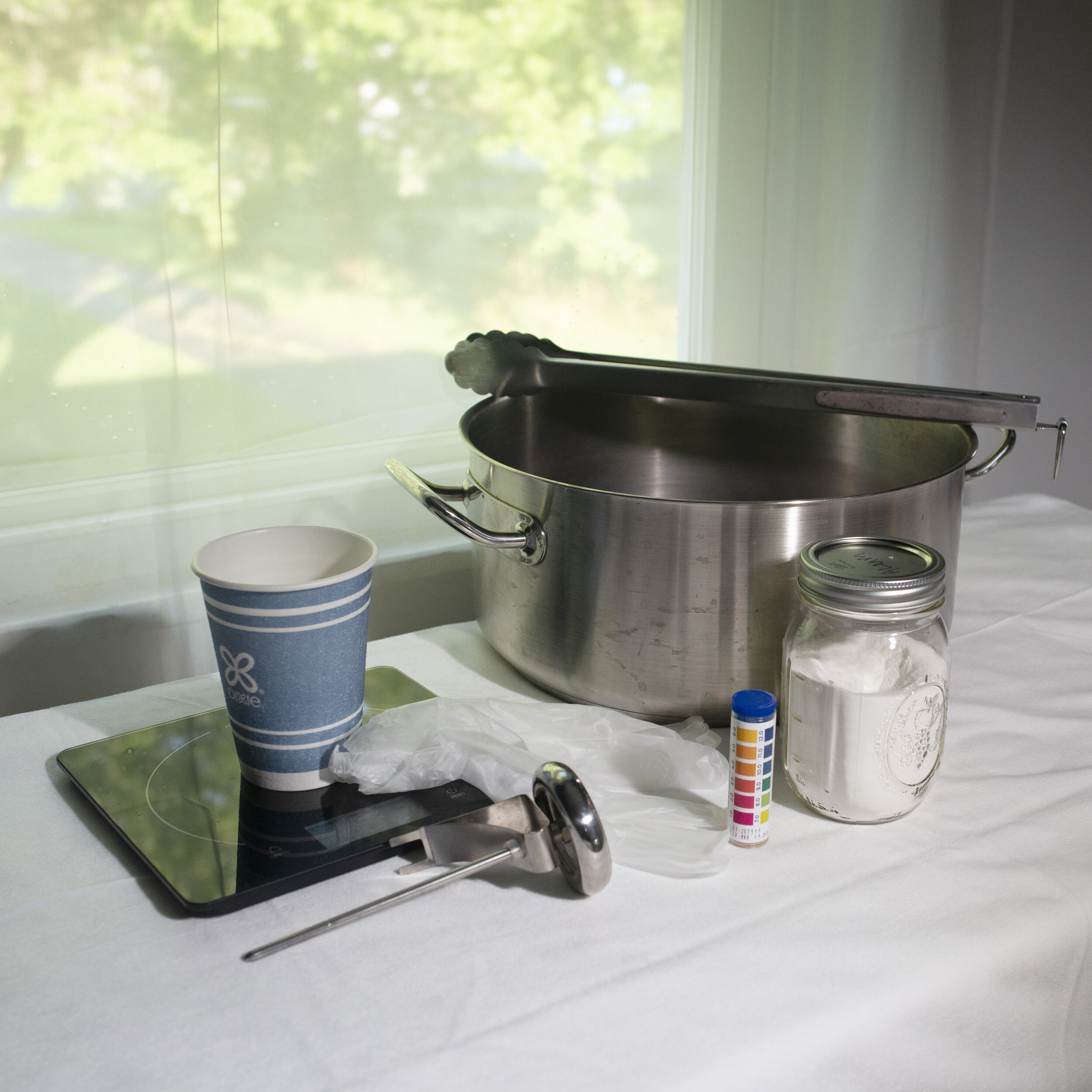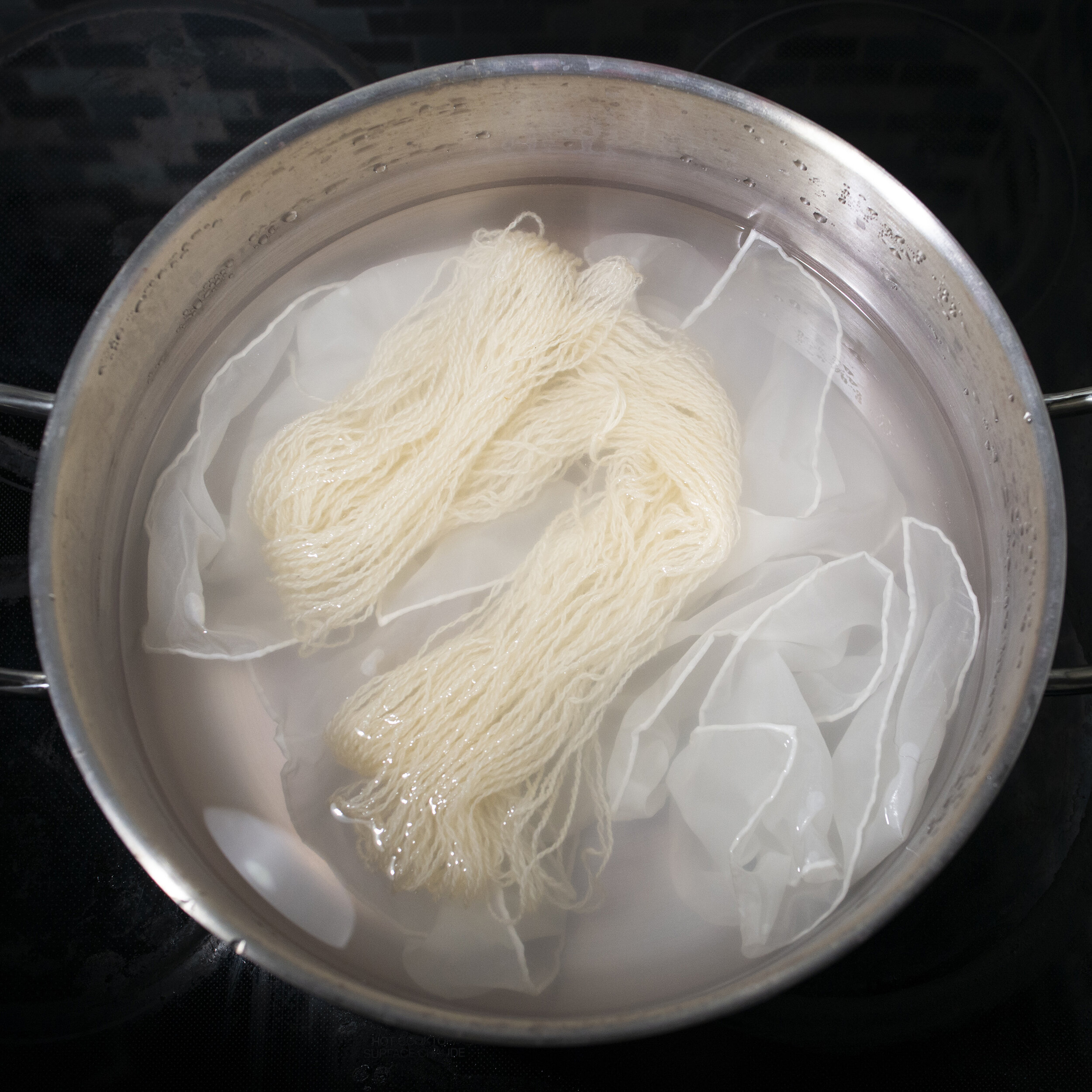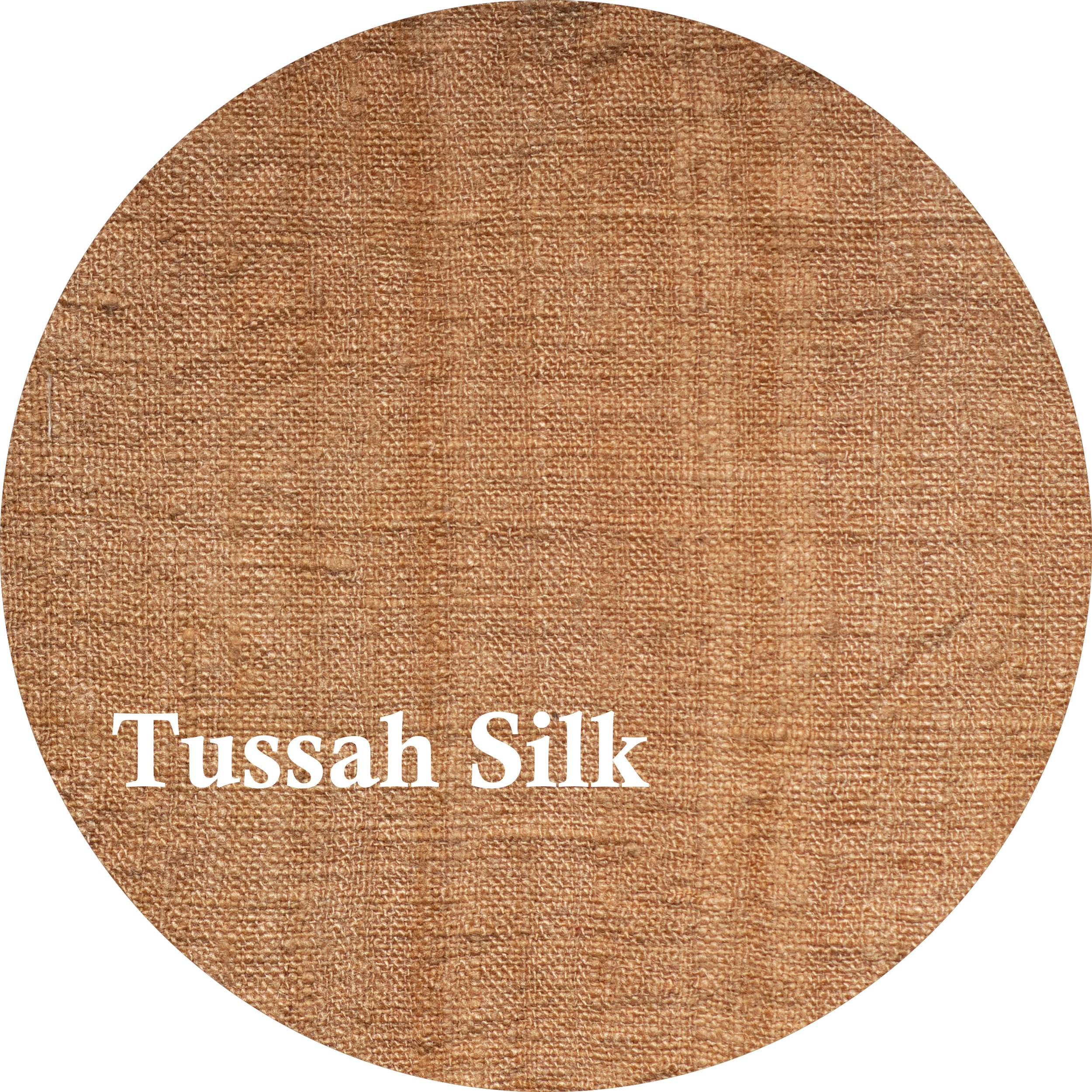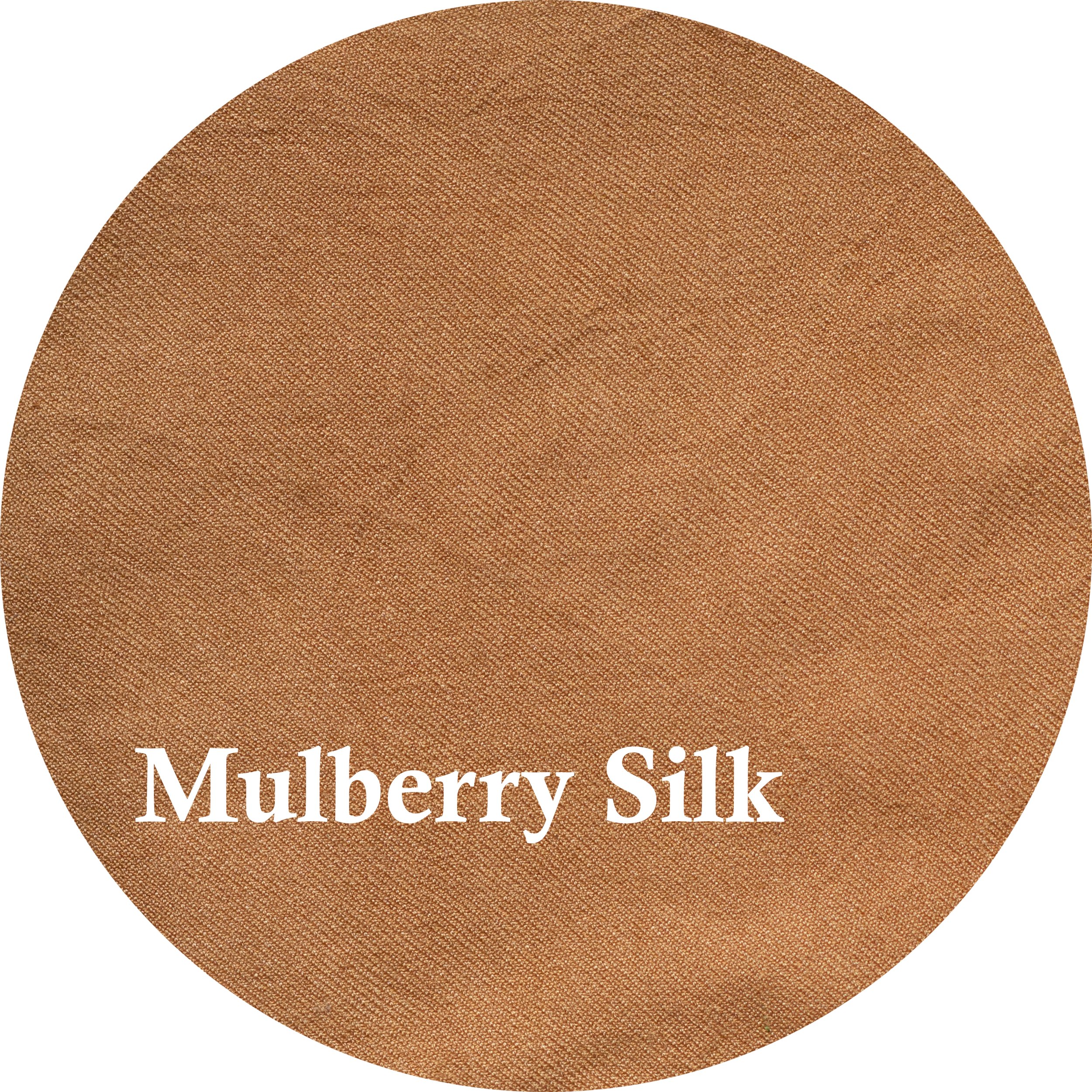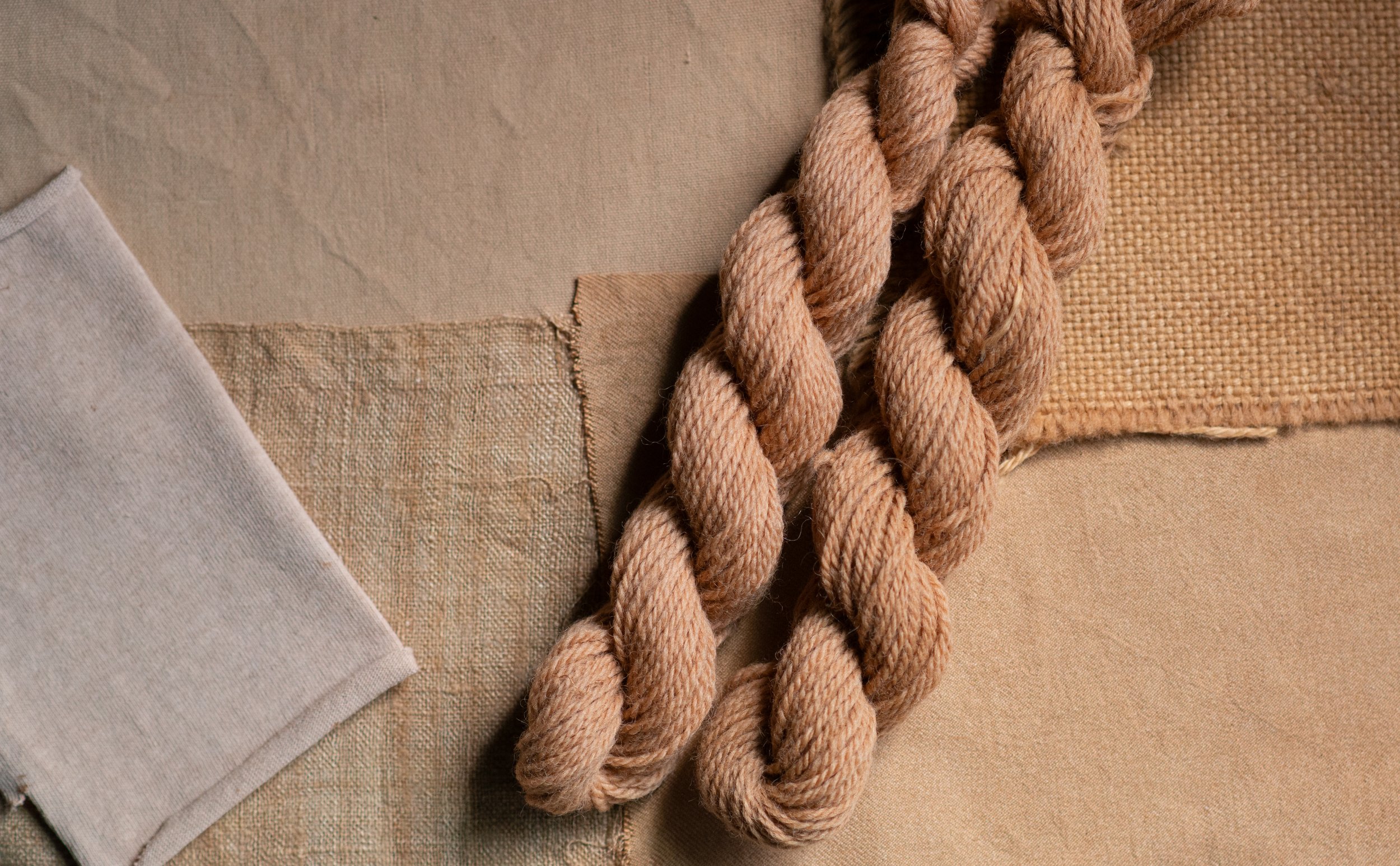
Quebracho Wood
A Guide to Quebracho Wood
Shepherd Textiles Quebracho Wood Natural Dye contains the ground heartwood of Schinopsis balansae, a hardwood native to Argentina and Brazil. Quebracho Wood is extremely rich in natural tannins, which help it bond to fiber with or without a metal mordant. It produces warm tan and sandstone shades on all natural fibers, including cotton. It can also be used as a tannic pre-treatment to make cotton more receptive to mordanting. Our Quebracho Wood comes from South American timber that is ground to a fine powder in India. Use it at 25% weight-of-fabric (WOF) for warm natural shades.
1. Background on Quebracho Wood
The term “quebracho” is a portmanteau of two Spanish words, quebrar and hacha, with together translate as “axe-breaker.” There are several species of South American hardwoods referred to as quebracho woods, most of them growing in Argentina, Paraguay, and Brazil. Schinopsis balansae, sometimes called quebracho moreno (“dark quebracho”) is the one most commonly using as a natural dye. The wood of Schinopsis balansae is extremely dense and durable, and in Argentina it is used for telephone poles, railway ties, and lumber supporting bridges. The wood is also rich in natural tannins, and an extract of the ground wood has historically been important to the local leather-tanning industry.
Quebracho gives warm tan and sandstone colors on all natural fibers, including on cotton. It is easy to apply—just simmer the ground wood with the fiber—and gives very lightfast results. Our quebracho wood comes from South American timber that is ground to a fine powder in India.
Tough and Tannic
2. Safety Precautions
DO NOT INGEST. This product is intended for textile dyeing, not as an herbal supplement.
Open carefully to avoid spills or creating dust.
Avoid eye contact. If eye contact occurs, rinse with cool water.
Not for use as a cosmetic additive; do not apply directly to skin or hair.
If a spill occurs, quickly wipe up with a paper towel or disposable rag.
Use only dye pots and utensils dedicated to dyeing. Do not use any pots, containers, spoons, tongs, thermometers, or other utensils that will be used for food preparation.
Quebracho Wood powder, and all dye baths and mordant liquors made while dyeing, should be kept out of reach of children and pets. Use only with adult supervision.
Shepherd Textiles, LLC is not liable for any misuse of this product or any unintended staining of your clothing, workspace, or other property. Use only as directed.
3. Recommended Supplies
Dye pot. Use a dye pot large enough to hold all your fibers, with plenty of room for them to move around and for the liquid to circulate freely.
Metal tongs. A pair of tongs is useful for stirring and taking fabric out. Use tongs dedicated to dyeing, and not for food preparation.
Rubber gloves. Wear rubber gloves while handling mordanted/dyed fiber before it has been rinsed.
Candy thermometer. The best way to keep track of temperature is to use a candy thermometer that clips to the side of the dye pot.
Scale. Use a scale to weigh out fiber, mordant, and dyestuff.
Alum mordant. The alum usually used for mordanting is aluminum potassium sulfate, also known as potash alum. It is the same alum that you can find in a jar in the spice section at the grocery store.
4. Preparation: Mordanting with Alum (Optional)
Quebracho Wood is rich in tannins and it will dye natural fibers without the need for a metal mordant. Mordanting with alum will, however, yield slightly darker shades and improve lightfastness. If possible, soak your fibers in water for a few hours before mordanting them, so that the mordant will penetrate deeply and evenly. Make sure to weigh the fibers first, while they are still dry.
For protein fibers (wool, silk, alpaca, etc.): Mordant at 12% WOF with alum.
Weigh out the fibers you plan to dye (while they are dry). Multiply that weight by 0.12 to get the amount of alum you will need.
Fill your dye pot with hot tap water, leaving enough room for the fiber.
Weigh out the correct amount of alum and pour it into the dye pot. Mix with a spoon or metal tongs until it has dissolved.
Gently place your fibers into the mordanting solution.
Heat mordant bath to 180F and maintain heat for 1 hour. If you don’t have a candy thermometer, you will have to estimate the temperature. At 180F, steam vapor will be rising off the water but it will not be bubbling. If your mordant bath starts to bubble, turn down the heat.
Stir every 15 or 20 minutes to make sure fibers mordant evenly. If they do not, the dye will take better in some places than others.
After an hour, remove from heat and let cool to room temperature. Once cool, you can immediately proceed to rinsing, or you can leave the fibers to steep overnight in the mordant bath. This can dramatically improve results, especially when dyeing thick or tightly woven fabrics. We often let fibers soak in the cold mordant bath for 2 or 3 nights before dyeing with madder to get the deepest, clearest scarlet colors.
When ready to rinse, put on rubber gloves and gently squeeze excess mordant solution back into the pot. Rinse fibers briefly in lukewarm water. The fiber does not need to be thoroughly washed, but any excess mordant should be rinsed out. Set aside until ready to dye. Keep out of reach of children and pets.
Dispose of mordant solution according to local guidelines.
For cellulose fibers (cotton, linen, etc.): Scour well and treat with a tannin before mordanting.
Quebracho Wood does not require any special pre-treatment to dye cotton. Indeed, quebracho often is the pre-treatment for cotton. However, if you want to use it as a dye and achieve darker colors on cellulose fibers, follow the standard procedure of tanning and then mordanting.
Scour cellulose fibers well. Traditionally this is done in a highly alkaline soda ash solution. Add 2 tsp of soda ash and 1 drop of dish soap to a 5-gallon dye pot. Add cellulose fibers and heat to 180F-190F for an hour, stirring occasionally. Remove from heat, and when cool enough to handle, rinse and wring out well. Household detergents like Tide© are also alkaline (PH 11), so you can also toss the fiber in a washing machine on a high-temperature cycle with plenty of detergent. This will not clean them nearly as deeply as simmering with soda ash, but it will yield much better results than not scouring at all.
Apply a tannin to the scoured fabric. Use Quebracho Wood itself at 5% weight-of-fabric; alternately, you can use Myrobalan or Sumac Extract. Fill your dye pot with hot water, dissolve the tannin in the dye bath, simmer the fibers for an hour, then allow to cool. For best results, steep overnight. This process will make the cotton or linen more receptive to mordants. After steeping, remove fibers and squeeze dry.
Mordant with alum as described above for protein fibers. Some dyers like to add 1% soda ash to the mordant bath to neutralize the PH.
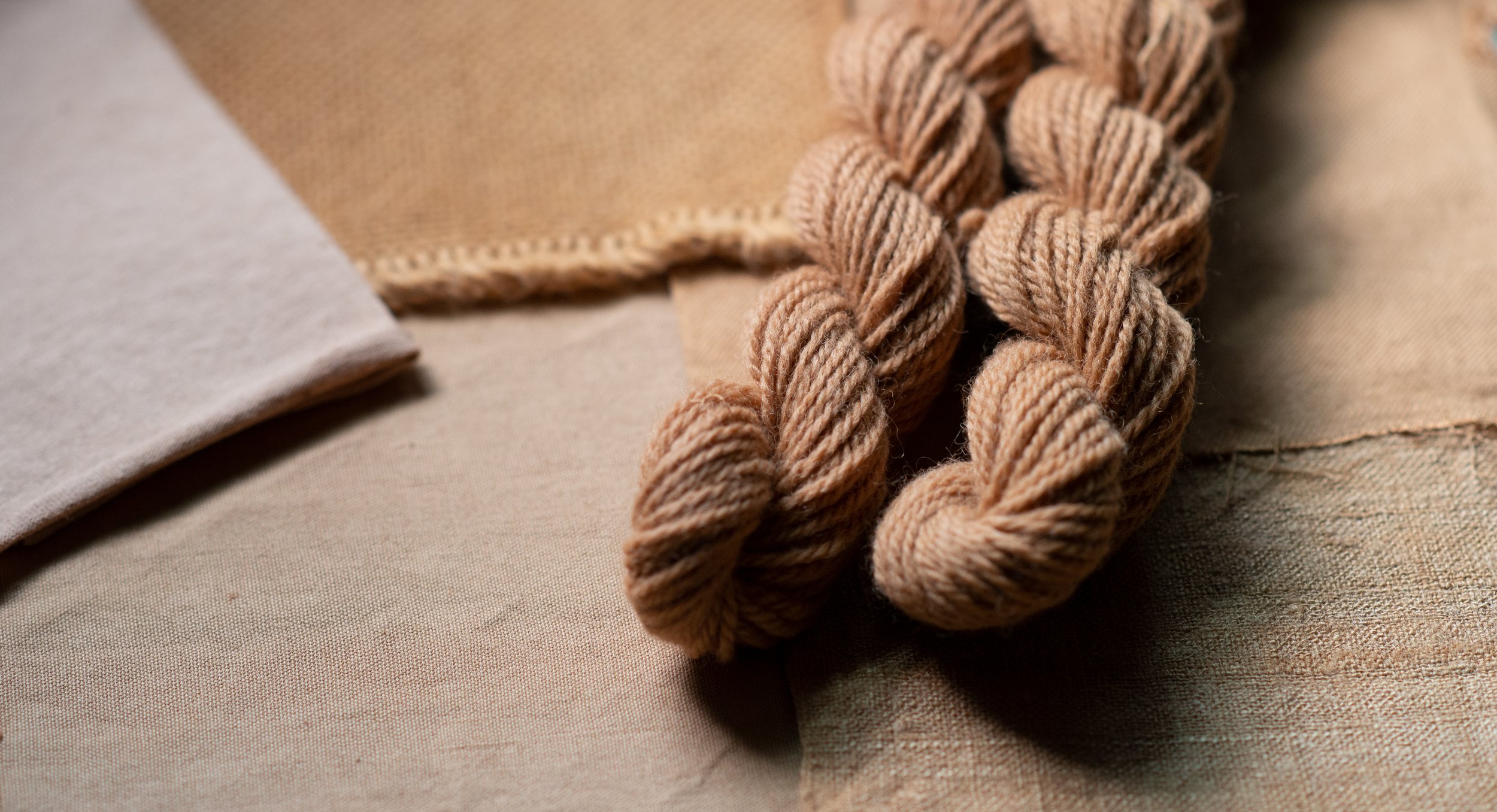
The Recipe
5. Recipe: Sandstone
The basic recipe for Quebracho Wood is to use 25% weight-of-fabric to produce a warm sandstone hue on natural fibers. Some dyers recommend adding a little alkali to the dyebath to shift the hue from yellow browns toward red browns. The high level of natural tannins present in the wood make quebracho an excellent dye for cotton. It can also be used, like Sumac and Myrobalan, as a tannic pre-treatment to make cotton more receptive to mordants. In that case, follow the same recipe but use only 5% weight-of-fabric.
Fill your dye pot mostly full with warm water.
Weigh out 25% weight-of-fabric (WOF) of Quebracho Wood powder. Sprinkle over the dye bath and mix well.
Add your pre-soaked and pre-mordanted fibers to the dye bath.
Heat the dyebath to 180F for wool and cotton, or 160F for silk. Maintain the heat for 2 hours, stirring occasionally to make sure all the fibers dye evenly. After 2 hours minutes, take off the heat and allow to cool to room temperature.
When cool, remove the fibers and rinse briefly in lukewarm water. You can either proceed immediately to rinsing with detergent, or hang the fabric up to dry first to help the color set. Make sure to hang it up in the shade somewhere where dripping dye will cause no damage. Direct sunlight may fade the color before it has had time set.
For final rinsing, we recommend using a PH-neutral detergent like Synthrapol, which is designed to wash out loose dye. Follow the manufacturer’s directions for best results. CAUTION: Quebracho Wood may bleed if not thoroughly rinsed out after dyeing.
Hang up to dry out of direct sunlight.
All images and text are copyright of Shepherd Textiles, LLC. Do not reproduce without written permission and attribution.


